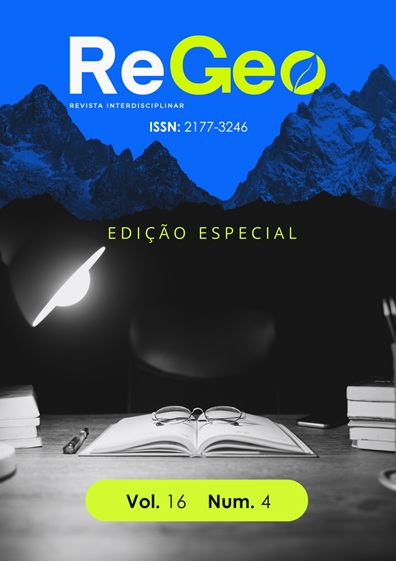LITERARY INTERTEXTUALITY, INTERPRETATIVE ANALYSIS, AND AFRO-BRAZILIAN RELIGIOSITY FOUND IN THE SONGS BY MARIA BETHÂNIA
DOI:
https://doi.org/10.56238/revgeov16n4-094Keywords:
Brazilian Popular Music, Literature, Maria Bethânia's Interpretation, African-Based Religiosity, Sung WordAbstract
Maria Bethânia's interpretations of Afro-Brazilian literature provide fertile ground for intertextual analysis of literature, music, and religion. Her career is marked by an aesthetic sensibility that intersects the sacred, the poetic, and the popular in performances that are simultaneously sung words, declamations, rituals, and songs. The research reveals related themes that can be explored analytically in the form of literary interaction. The text presents a summary of the singer's biography. We will learn how she acquired her literary knowledge and how she developed her syncretic faith. Evaluations of the songs chosen and performed by Bethânia will allow us to understand a little more about the history of the Catholic saints Saint Barbara, Saint Anthony, Saint John the Baptist, Saint George, as well as the Candomblé orishas: Oxum, Ogum, Xangô, and Oyá-Iansã. For intertextual analysis, bibliographic research was used, with a comparative analysis of MPB songs, which allows us to understand how Brazilian popular music can function as a means of valuing Black culture and African-based religiosity. The main scholars in this field are: Abreu (2004), Almeida (2012), Carvalhal (2008), Fonseca (2007), Passos (2008), Pena (2013), Resende (2015), Silva (2004), and Zumthor (1993). Her religious principles and poetic signature are evident in her songs, which she herself chooses to express her artistic, spiritual, and poetic essence.
Downloads
References
ABREU, Márcia. História do Cordel. São Paulo: Moderna, 2004.
ALMEIDA, J. A palavra encantada: música, infância e poesia. São Paulo: Cortez, 2012.
ALMEIDA, J. Canção, infância e poesia: reflexões sobre a palavra cantada. São Paulo: Cortez, 2016.
BESSA, Waldemberg Araújo. O diálogo da música, literatura e religião nas interpretações de Maria Bethânia. Revista Línguas & Letras – Unioeste – Vol. 15 – Nº 28 – Primeiro Semestre de 2014. p. 160 - 179.
CARVALHAL, Tania Franco. Intertextualidade: teoria e prática. São Paulo: Perspectiva, 2008.
FONSECA, Claudia. Palavra cantada: poesia e música em diálogo. Belo Horizonte: Autêntica, 2007.
KRISTEVA, Julia. Introdução à semanálise. São Paulo: Perspectiva, 1974.
LOPES, Nei. Dicionário escolar afro-brasileiro. São Paulo: Selo Negro, 2011.
NAPOLITANO, Marcos. Seguindo a canção: engajamento político e indústria cultural na MPB (1959-1969). São Paulo: Annablume, 2001.
PASSOS, João Carlos de. Maria Bethânia: trajetória, espiritualidade e arte. Salvador: EDUFBA, 2008.
PENNA, Maura. Música(s) e seu ensino. Porto Alegre: Sulina, 2013.
RESENDE, Beatriz. Literatura e música: travessias poéticas de Bethânia. Rio de Janeiro: 7Letras, 2015.
SANTOS, Juana Elbein dos. Os nagô e a morte: Pade, Asese e o culto Égun na Bahia. Petrópolis: Vozes, 2005.
SILVA, Ecléa Bosi da. A palavra cantada na cultura popular. Recife: Massangana, 2004.
SILVA, Vagner Gonçalves da. Orixás da metrópole. São Paulo: EDUSP, 2010.
VELOSO, Caetano. Verdade tropical. São Paulo: Companhia das Letras, 1997.
ZANELLA, L. Estética e criação: novos sentidos da arte. Porto Alegre: EDIPUCRS, 2000.
ZUMTHOR, Paul. A letra e a voz: a “literatura” medieval. São Paulo: Companhia das Letras, 1993.


